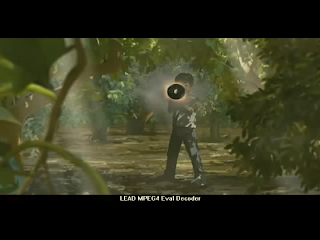The Barbarian Invasions
Denys Arcand
2003
I’ve always had special love about films that are eagerly celebrating life and at the same time scrutinizing it, and “The Barbarian Invasions” is one of those few movies that brim over deep passion over life. The film is not highly plotted, not really eventful to form the larger part of the film but also not that too uneventful to be confused with a head documentary. This sequel to a trilogy of drama-comedy by world famous director Denys Arcand is oozing with Canadian wit that it might have adopted from the French, with strapping opinion about life, and with simple film making investing on great characterization and film content.
The film is highly historical and allegorical which flaunts its intellectual endowment about the world giving these characters’ opinions about the planet we are living in valid, persuading, and something to be thought of. Almost all of the characters, except Nathalie, who is the heroin buddy of Remy, are all highly educated and politically, economically and philosophically opinionated human beings. Most of them are college professors of social sciences that’s why I was not surprised to hear dialogues of resentments like—the history of mankind is a history of horror, which is a statement of scepticism but at the same time declaration of intense observation about the world. The best allegory I have noticed in the film is Remy’s personification of his son Sebastien as “The Prince”—the timeless utopian character of a king by Niccolo Machiavelli. Sebastian, played by Stephan Rousseau, is an estranged son to Remy. Despite that painful fact, and despite his booming career in the international financial scene, and despite his antipathy to the broken family they have because of his father’s mistresses, he still finds it worthwhile to make the remaining days of his father’s life comfortable and forgiving. So Sebastien, using his money, intelligence, and smarts, is able to occupy the whole basement of the hospital for his father, to have a continuous supply of prohibited heroin for his father’s secret medication, to have his father’s previous college students to have paid visits, and accompanied by his charismatic front stage personality, as hugely contributed by Stephan Rousseau’s magnetic performance, he is able to become the epitome of the contemporary “Prince” Macchiavelli has been conceptually formulating centuries ago. The “Barbarians”, as according to Remy are his friends, fellow thinker, fellow socialists. Referring to our history, barbarians are the less civilized human beings, thus making the operational title of the film as the invasion of the less civilized. Since the film is intellectually-compelled, civilization is the intellectual counterpart of the operational title but it is not to say that the group Remy belongs to is a less intellectual bunch of people, rather a group of the alternative and freer thinkers as opposed to the hegemonies such as capitalism perhaps. Therefore, as I understand the film, “The Barbarian Invasions” metaphorically means “The Advent of the Independent Thinkers”.
Liberation and education is at the core of this extremely lovely comedy-drama. Aside from the assistance of the physical element of our protagonist as a college social science professor, and of course his colleagues, and the students, and the university, the film is far above the ground committed to learning and continuous education. The scene where Sebastien asked the police officer what did he study in college and the officer answered Criminology minor in Psychology, and then the officer asked the same question and Sebastien answered Mathematics minor in Economics is the simplest yet most powerful movie scene that insinuated much about a person’s passion and core of intelligence or specialty. The scene where Remy asks his son what particularly he does in his job in London
The characters building this mirror image of our world society are generally endearing, significant, and unforgettable, especially Sebastien, which I have discussed above in his the-end-justifies-the-means philosophy borrowed by the popular passage from Machiavelli. The protagonist Remy is another lovable film character at least of the 21st century. Though I generally hate patriarchal objectification of women, his likability makes me forgive that side of his nature. Perhaps, to be more specific, the scene where he reminisce all beautiful women in the world that he has seen on TV and movies, from Maria Goretti who dips her adorable toes on the water, to Francoise Hardy singing on TV, to Julie Christie, etc, that scene is nothing less than a bittersweet longing for the past that is the purest recollection of the most pleasurable guilt every man could ever carry on so deeply. That sincere scene is one of the most sincere I have ever witnessed on any national cinema and that is more than enough for me to forget feminism for the mean time and at most realize the beauty of being objectified.












